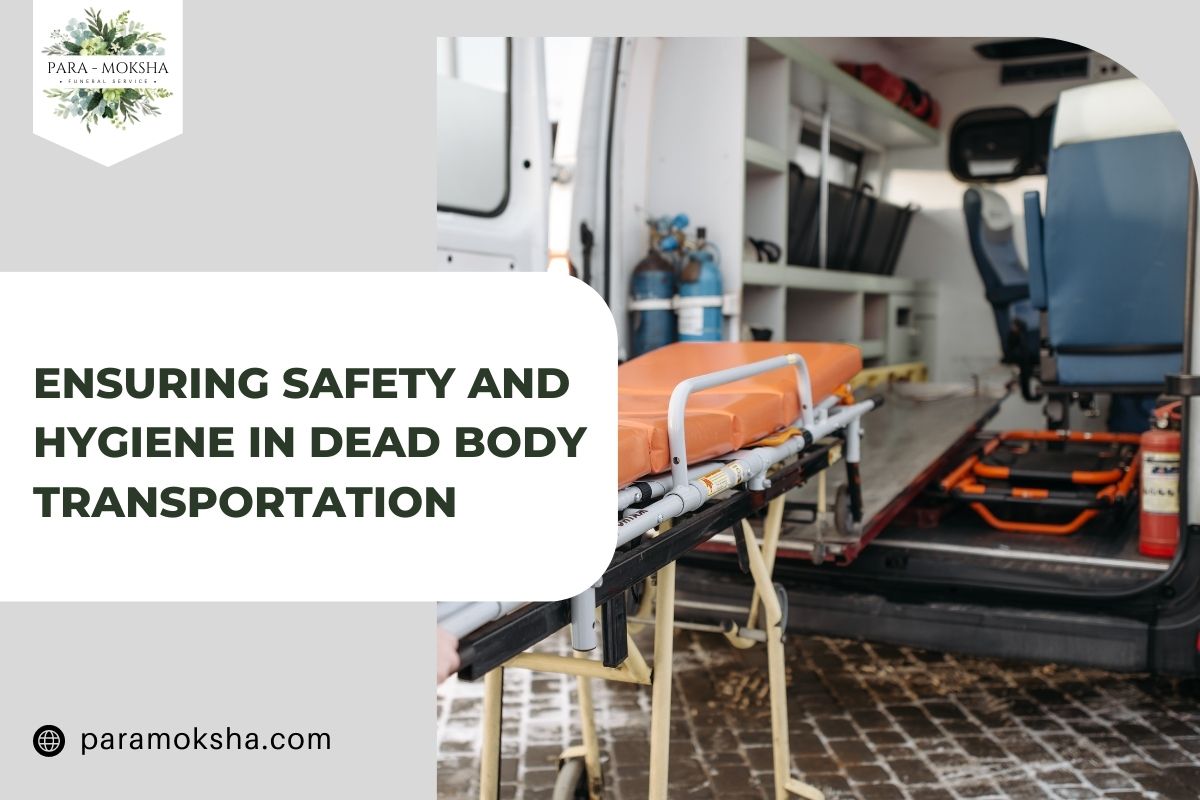The delicate and essential task of transporting deceased people calls for the utmost care and attention. Whether they are being repatriated to their home country or transported to a funeral home, it is essential to ensure safety and hygiene during Dead Body Transportation. In this blog post, we will look at the various procedures and guidelines that professionals use to transport deceased people at the highest possible levels of safety and hygiene.
Compliance with Requirements Set by Law and Regulation:
There are specific legal and regulatory requirements for transporting human remains that vary from jurisdiction to jurisdiction. It is absolutely necessary for providers of transportation to be familiar with and adhere to these rules. This includes getting the permits, certificates, and other documentation necessary to ensure that the deceased is handled lawfully and appropriately.
PPE, or personal protective equipment:
Personal protective equipment (PPE) is required when handling deceased individuals. Gloves, masks, gowns, and eye protection are all part of this to safeguard against disease transmission and maintain personal hygiene. To reduce the likelihood of contamination, the transportation team should receive instruction on how to properly use and dispose of protective gear.
Preparation and Preservation of the Body:
In order to maintain hygiene and stop the spread of diseases, the deceased must be properly prepared and preserved. Typically, the process of decomposition is slowed down through the use of embalming or refrigeration. Chemicals are used to disinfect and preserve the body during embalming. The risk of microbial growth is reduced and decomposition is slowed down by refrigeration. These measures guarantee that the body will continue to be in a state that is suitable for transportation.
Containment and packaging that is safe:
To avoid exposure or leakage during transportation, dead bodies should be securely packaged and contained. The use of specialized body bags or caskets made for transportation ensures the highest level of hygiene and safety. Most of the time, these containers are resistant to external damage, airtight, and free of leaks. For accurate documentation and identification, the deceased must also be properly labeled and identified.
Cleanup of Transport Vehicles:
To eliminate any potential sources of contamination, transportation vehicles must be regularly cleaned and disinfected. After each transport, the vehicle’s interior, including the surfaces, floors, and ventilation systems, should be thoroughly disinfected. It is possible to guarantee the safety of the transportation staff as well as the deceased by adhering to stringent sanitation procedures.
Adherence to Efforts to Control Infections:
To reduce the likelihood of disease transmission, professionals working in transportation should adhere to standard infection control procedures. This entails adhering to universal precautions, frequent equipment sanitization, and proper hand hygiene. To ensure a clean and secure environment throughout the transportation process, vehicles ought to be outfitted with essential supplies like hand sanitizers, waste disposal bags, and disinfectants.
In order to preserve the dignity of the deceased and prevent disease transmission, transporting them requires meticulous attention to safety and hygiene. Paramoksha ensures that a dead body is transported in a safe and hygienic manner. it is essential to adhere to all legal requirements, use appropriate personal protective equipment, use methods for body preparation and preservation, secure packaging, and thoroughly sanitize the vehicle. Professionals can provide compassionate and respectful service while prioritizing the well-being of all parties involved by adhering to these guidelines.

